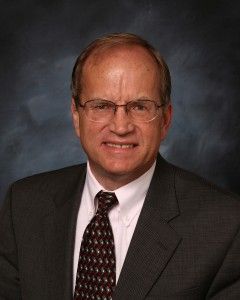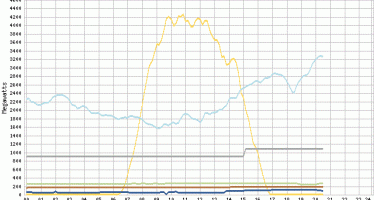New legislator pitches merit pay
Feb. 4, 2010
By JOHN SEILER
 Fresh faces bring fresh ideas. Just elected in a special election, new Assemblyman Chris Norby, R-Fullerton, is brimming with ideas on how to reform education in California. The former high-school history teacher most recently served on the Orange County Board of Supervisors, where he was known as a fiscal watchdog. Before that, he was mayor of Fullerton.
Fresh faces bring fresh ideas. Just elected in a special election, new Assemblyman Chris Norby, R-Fullerton, is brimming with ideas on how to reform education in California. The former high-school history teacher most recently served on the Orange County Board of Supervisors, where he was known as a fiscal watchdog. Before that, he was mayor of Fullerton.
California certainly needs improvement in education. Its public schools, in the 1960s a model for national excellence, now perennially rank near the bottom of the 50 states. In 2009 on the National Assessment of Educational Progress, California ranked third-worst of the 50 states in fourth-grade math; and second worst on eight-grade math, above only Mississippi.
One in five high schoolers quits before graduation in California. In Los Angeles, the rate is 35 percent. Los Angeles Mayor Antonio Villaraigosa called the high dropout rate “the new civil rights issue of our time.”
Norby told me of his reform ideas, which he is formulating into a bill to be introduced soon:
- “Pay teachers more, but give them more to do,” he said.
- Pay for performance in the classroom.
- “Don’t worry about class size,” which would mean increased class sizes. “A good teacher can handle a class of 40,” he said. This effectively would repeal the 1996 reform under then-Gov. Pete Wilson that reduced K-12 class sizes, and a later reduction in high-school class sizes.
- Increase teacher hours. Currently, he said, high-school teachers’ days generally run from 7 a.m. to 3 p.m. – seven hours. But they teach only five of those hours, the other two hours going to preparation. One of those preparation hours could be switched to classroom teaching.
- Larger class sizes and fewer teachers would “save on overhead,” the money going to the higher teacher pay.
- Money to pay for higher salaries also could come from schools contracting-out custodial work, which now commonly is done by high-paid district employees.
- Forget about boosting teacher pay by increasing school budgets. “You can’t increase the budget. There’s no money,” he said, referring to the state’s perennial budget deficits.
- Cut down on administrative waste. He noted that, in 1920, 70 percent of K-12 education money in California went to teachers; today it’s just 45 percent.
Norby pointed to South Korea, where teachers are paid 40 percent more than in America, but they “have 50 percent more kids in the classroom.” Korean kids commonly score near the top in international tests.
He said his reforms would bring better qualified teachers to the profession, attracting students from the top 15 percent of college graduates instead of, as now, from the bottom 15 percent.
In sum, Norby said, “Give teachers more to do. Pay them more. And get better quality pupils.”
Pay for achievement
The Norby reforms have merit, Lance Izumi told me; he’s Koret Senior Fellow in Education Studies at the Pacific Research Institute, CalWatchDog.com’s parent institute. “Teachers should have the option of working in a merit-pay system,” he said. “Why limit teachers to a traditional school day if they’re willing to do more? If they’re willing to teach a class of 40 kids and have more responsibility, that should be an option. One of the good things of charter schools is that they pay a teacher more for additional output and more responsibility.”
On class-size reduction, he pointed to a 2000 study for the California Department of Education by B.M. Stecher and G.W. Bohrnstedt, “Class Size Reductions in California: The 1998-99 Evaluation Findings.” The study isn’t online without a subscription. But this summary noted the conclusion of this and other studies that reduced-class sizes were beneficial if done with excellent teachers. However:
In fact, racial and ethnic educational inequities among students may be exacerbated by CSR, as the burdens of implementation fall disproportionately on urban schools suffering from poverty, overcrowding, and language barriers, and the need to provide many special services (Jepsen & Rivkin, 2002). The possible positive effects attributable to smaller classes were often mitigated in these schools because teacher quality was lower than in other schools, as more experienced teachers left to fill new CSR openings in less troubled schools.
Izumi’s view of the Norby reforms was seconded by Eric Hanushek, the Paul and Jean Hanna Senior Fellow at the Hoover Institution of Stanford University. “It probably makes a lot of sense if you could do it,” he told me. “Class-size reduction is a stupid idea. The important thing is pay for performance. And pay for it with class-size increases.” He said pay should be based on “student achievement gains – one year over another.”
What kind of merit?
An important consideration is how to evaluate teacher performance, Margaret Gaston told me; she’s president and executive director of the Center for the Future of Teaching and Learning is a public, not-for-profit organization dedicated to strengthening teacher development policy and practice.
“One of the challenges we face with pay for performance – or merit pay – is what do we mean by that?” she said. “What is meritorious? Is it increasing student test scores? Reducing the dropout rate? Is it working with colleagues in the profession to bring novices into the profession? What evidence is there that different rewards might be effective? Will the merit pay be a one-time stipend? Hard-wired into the salary schedule? Release the teacher for one hour a day to work with novice teachers?”
She added that another key to student performance is having a good principle: “That trumps any increase in pay for teachers.”
Union opposition
Izumi cautioned that it will be tough going for Norby to advance his ideas because of resistance from teacher unions, “who want to keep the standard pay scale,” in which teachers are paid by seniority and level of training, not performance.
In 2005, Gov. Arnold Schwarzenegger proposed merit pay for teachers, saying that the best teachers should get paid more than those who “just show up.” Replied California Teachers Association President Barbara E. Kerr, “I don’t know any teachers who ‘just show up.’ The teachers I know work extremely hard under very challenging conditions.”
Norby said that his reforms actually might have some appeal to the teacher unions, which then would have higher-paid members, although fewer of them.
But whatever the opposition, Izumi said, Norby “should push the idea out there.”
John Seiler, an editorial writer for 19 years at The Orange County Register, currently is a reporter and analyst for Calwatchdog.com. His email: [email protected].
Related Articles
Six bills would make it easier to pass tax increases
MAY 17, 2013 By Katy Grimes SACRAMENTO — The Senate Governance and Finance Committee on Wednesday passed six constitutional amendments
OC Unions Right, Businesses Wrong
Steven Greenhut: It’s not every day that I side with the public employee unions. In fact, it’s almost never the
Solar crash ramped up CA natural gas power
Yesterday a problem struck California’s electricity system that wasn’t supposed to happen until at least 2015. Freak low-lying clouds



